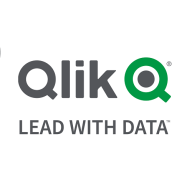

ETL Solutions Transformation Manager and Qlik Replicate compete in the data integration category. Qlik Replicate often has the upper hand due to its extensive feature set and broad source compatibility, making it a preferred option despite its higher cost.
Features: ETL Solutions Transformation Manager provides customizable transformations, robust data processing, and tailored data manipulation capabilities. Qlik Replicate supports a wide range of data sources, offers real-time data replication, and ensures seamless integration across diverse data environments.
Ease of Deployment and Customer Service: ETL Solutions Transformation Manager is known for easy deployment and responsive customer service, reducing operational transition times. Qlik Replicate may present deployment challenges but compensates with comprehensive support and extensive documentation, aiding user experience.
Pricing and ROI: ETL Solutions Transformation Manager features lower setup costs and quick ROI, making it ideal for budget-conscious organizations. Qlik Replicate has higher upfront costs but provides significant long-term value through efficient data handling and wide source compatibility, appealing to enterprises with complex integration needs.


Qlik Replicate is a data replication solution for replicating data from one source database to another for business intelligence software. It offers data manipulation and transformations, replication without impacting source databases, and ease of use without needing ETL. The solution is stable and user-friendly, with detailed logging and support.
Qlik Replicate has improved the organization by allowing each team to replicate their data into a single-source data location. The most important feature of Qlik Replicate is its ability to replicate and update records without needing a programmer.
We monitor all Data Integration reviews to prevent fraudulent reviews and keep review quality high. We do not post reviews by company employees or direct competitors. We validate each review for authenticity via cross-reference with LinkedIn, and personal follow-up with the reviewer when necessary.